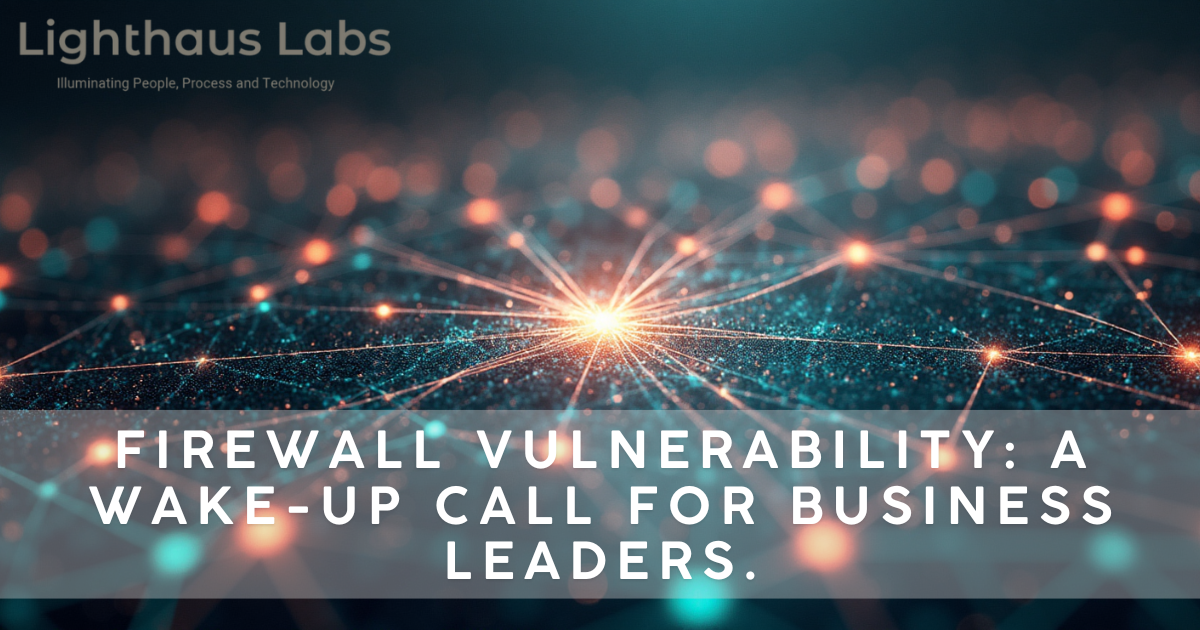SonicWall Firewall Attacks: What Business Leaders Need to Know — and How to Protect Your Company
Last year, SonicWall issued a patch for this issue (advisory SNWLID-2024-0015). Yet many organizations either didn’t apply it fully, migrated settings from older devices, or reused legacy passwords.
The Big Picture
A serious vulnerability in SonicWall firewalls has resurfaced — and it’s now being actively exploited by ransomware groups like Akira.
This flaw, known as CVE-2024-40766, affects SonicWall’s SSL VPN feature, allowing attackers to gain unauthorized access to internal systems if devices are unpatched or misconfigured.
The alarming part? Many of these attacks are targeting businesses that thought they were secure — highlighting a critical truth: cybersecurity is not a one-time project. It’s ongoing risk management.
What’s Really Happening
Last year, SonicWall issued a patch for this issue (advisory SNWLID-2024-0015). Yet many organizations either didn’t apply it fully, migrated settings from older devices, or reused legacy passwords.
Fast forward to now — attackers have found these weaknesses and are using them to deploy ransomware, steal data, and disrupt operations.
In simple terms:
Hackers are targeting SonicWall devices with SSL VPN enabled.
They’re exploiting weak or reused passwords and outdated firmware.
Once inside, they encrypt data and demand ransom payments.
Even companies with MFA have been impacted when attackers gained access through inherited credentials or misconfigured VPN settings.
What Business Leaders Should Understand
You don’t have to be an IT expert to grasp the implications — this is a business risk, not just a “tech problem.”
Operational Downtime: Ransomware can shut down your systems and halt your revenue streams overnight.
Financial and Legal Exposure: Data breaches trigger costly investigations, legal fees, and compliance fines.
Reputational Damage: Losing customer or partner trust can take years to rebuild.
Insurance Implications: Insurers increasingly expect businesses to demonstrate proactive cybersecurity measures.
Your firewall isn’t just a box in the server room — it’s the gatekeeper of your entire digital infrastructure.
What You Should Do Today
Here are key executive-level steps your IT team or managed security partner should take immediately:
✅ Confirm your firmware version — apply the latest SonicWall patches addressing CVE-2024-40766.
✅ Reset all user passwords, especially those migrated from older devices.
✅ Require multi-factor authentication (MFA) for every remote connection.
✅ Disable unused VPN accounts and remove inactive users.
✅ Restrict VPN access by IP range (don’t leave the door open to the entire internet).
✅ Review logs for unusual activity — failed logins, new user creation, or admin changes.
✅ Consider a third-party security assessment to confirm no compromise has already occurred.
🛡️ Why Cyber Liability Insurance Belongs in Your Toolkit
Even with top-tier firewalls and patches, no business is immune to cyber incidents. That’s why Cyber Liability Insurance is a must-have safeguard.
It helps cover:
Ransomware payments and recovery costs
Legal defense and breach notifications
Forensic investigations and data recovery
Business interruption losses
Reputational repair and PR efforts
Think of it like fire insurance for your digital infrastructure — a small premium for potentially lifesaving protection.
Leadership Takeaways
Move from reactive to proactive - Schedule regular security assessments and patch reviews.
Treat cybersecurity as a business enabler - A secure company wins more trust, clients, and contracts.
Partner with experts who understand both technology and business - A good cybersecurity advisor bridges the gap between IT complexity and executive clarity.
Call to Action
At Lighthaus Labs, we help business owners and leadership teams gain command over technology and reduce cyber risk — from infrastructure hardening to insurance readiness.
If you’re unsure whether your SonicWall firewall or other remote access tools are secure, let’s talk.
We can perform a rapid vulnerability review and help you build a layered defense plan that protects your operations, data, and reputation.
